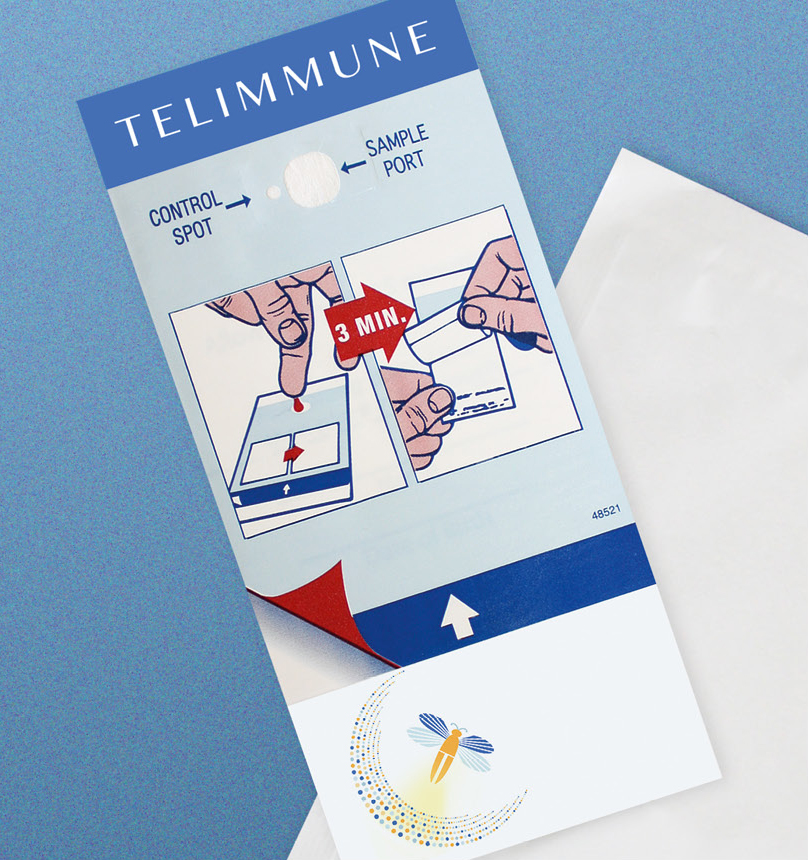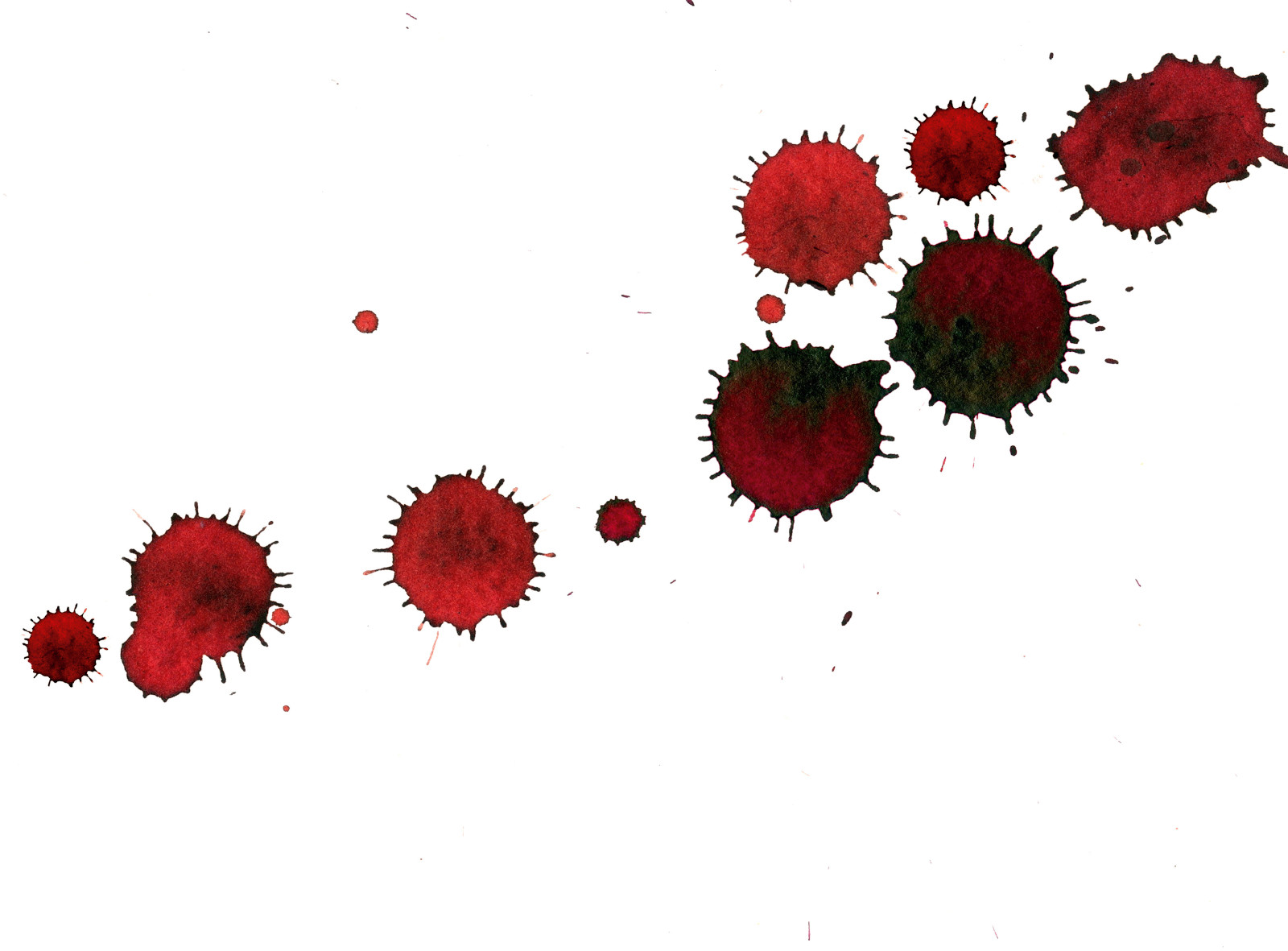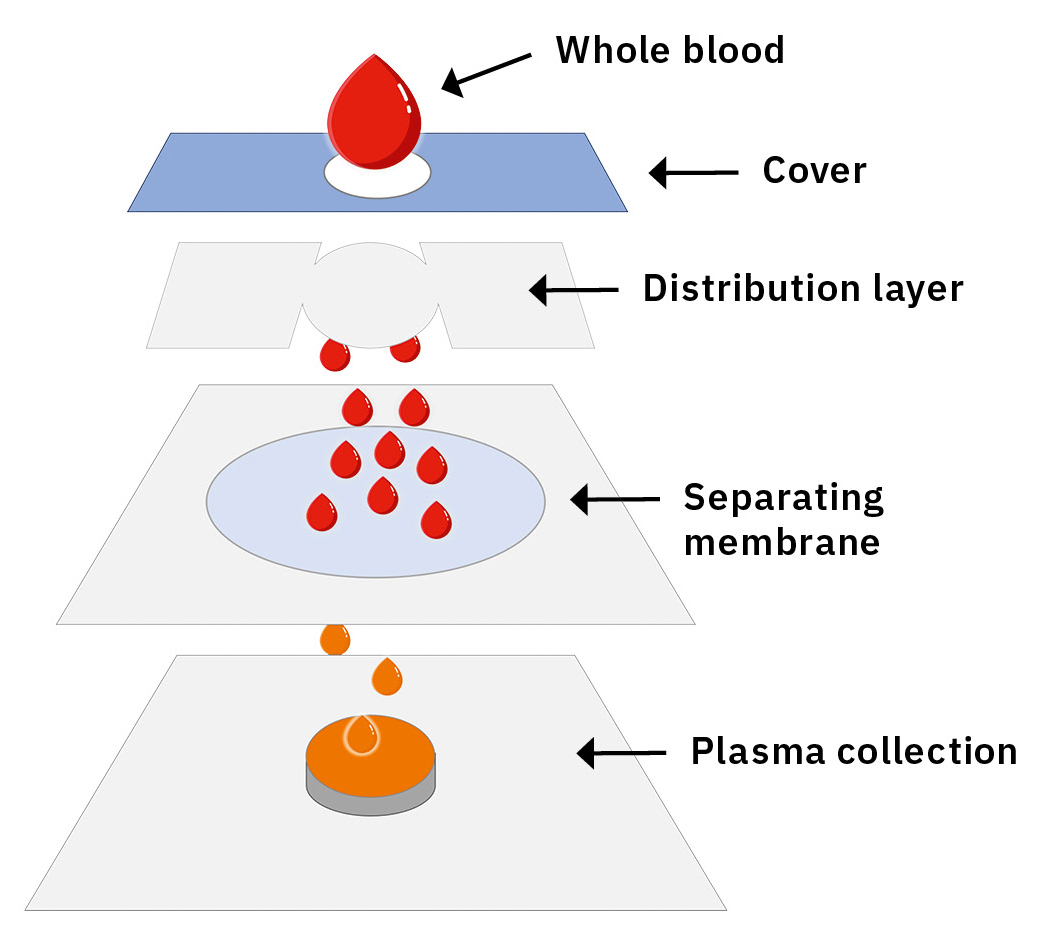New trump cards for blood analysis
DPS cards – a new method of collecting and analyzing blood
Dr. Martin Meyer, Shimadzu Europa GmbH
Many diseases these days can be diagnosed by analyzing blood samples. These methods, which are often very complex, place high demands on sample preparation. But in rural or underdeveloped areas in particular, these high requirements often cannot be met. Here it is important to obtain blood samples even under the most basic conditions, which lead to meaningful and reliable results in the laboratory. A challenge the blood plasma separation cards from Telimmune fulfill today.
Blood tests are carried out to diagnose a wide range of health conditions. These can provide valuable information about the function of organs, detect infections, reveal genetic disorders, determine hormone levels and help assess a person’s overall state of health. For chronically ill patients, blood tests are necessary to monitor the course of their disease and assess the effectiveness of the treatment. Thanks to ever-improving treatment methods, there is a large number of cancer survivors. However, they have a high risk of the carcinoma recurring and must therefore be continually monitored. Another area is newborn screening, which is one of the most successful medical measures in the US.[1] This screening can detect even rare diseases, so that an early treatment can be initiated even before the first symptoms appear.
Traditional methods for blood collection vs. micro blood sampling
Venipuncture is the most widely used method of blood collection. Here, a needle is advanced into a vein, usually in the arm, to draw blood. This technique is preferred for larger quantities of blood and allows a variety of tests to be carried out from a single sample.
The finger prick method, also known as capillary blood collection, is a less invasive method that is often used for point-of-care testing. The fingertip is pricked with a lancet, and a small drop of blood is taken. This technique is often used to monitor blood glucose levels in diabetics. The lancing method is quick, convenient, and only a small amount of blood is required.
In contrast to the methods mentioned above, micro blood sampling is a relatively new technique that can be used to take very small amounts of blood, usually less than 100 microliters. The blood is collected in microtubes or micro collection cards, also known as dried blood spot cards or DBS cards for short. Dried blood spot cards in particular provide many advantages, including greater convenience for the patient, less pain and the ability to collect and store blood in remote locations. This is possible because the blood drops are dried, eliminating the need for low-temperature storage and transportation.
The advanced dried plasma spot cards (DPS cards)
The majority of clinical tests begin with blood collection, which requires a trained person (phlebotomist) and subsequently a laboratory to process the serum and plasma. Using dried drops of blood simplifies the procedure, as the two requirements mentioned above are not necessary, but this technique does have a few drawbacks (Table 1). The uneven distribution of blood cells during drying and the lack of separation of serum and plasma can lead to degradation and contamination. Furthermore, different hematocrit values (the percentage of blood cells) lead to fluctuations in the blood samples. The cells present in dried drops of blood can metabolize and react to coagulation factors. These variables are difficult to determine and pose a challenge for conventional DBS cards. The dried plasma separation cards developed by Telimmune (also known as dried plasma spot cards or DPS cards for short) separate the plasma from degraded and whole cells, eliminating many of the issues (Figure 1). In addition, they only collect a certain amount of plasma, regardless of hemocrit and viscosity. This makes the cards valuable for obtaining blood samples under the most basic conditions, which are still able to provide meaningful results in the laboratory. In Europe, the Telimmune cards are offered exclusively by Shimadzu. The cards were sold under the name Noviplex until the name change in 2021.
A broad and versatile range of applications
Telimmune cards have been used for testing in an amplitude of applications, e.g. for ferritin, Helicobacter pylori (gastritis), vitamin D, HIV, genetic disorders, COVID-19, homocysteine, sickle cell anemia, warfarin, IgG antibodies and more.[2] Using previously published methods, more than 250 different components can be analyzed from the plasma cards. However, the potential of detectable components is over 2,000 analytes, providing ample possibilities for further usage.[1]

Telimmune cards are the trump cards for the future
Overall, collecting blood using Telimmune plasma collection cards offers a convenient and minimally invasive method of blood collection, storage and analysis that is beneficial in various clinical and research settings and others yet to be tried and tested. Telimmune cards hold all the cards for the future.

Collection
The area of skin that has just been cleaned with an alcohol swab is punctured with a lancing device. Two drops of blood are allowed to fall onto the spot marked on the card (Figure 2). After 3 minutes, the top layer of the card is removed. The removal disk underneath is air-dried for 15 minutes at room temperature. Afterwards or after storage, the plasma spot can be removed from the card and transferred to a vial for extraction.
Analytics
There are various methods for analyzing plasma. Approved techniques include ELISA, PCR, QPCR, enzymatics, chromatography, mass spectrometry and colorimetry. There are already a number of methods where Telimmune cards are combined with the analysis by Shimadzu liquid chromatography and mass spectrometry (LC-MS). Applications include the analysis of pesticides, protein biomarkers, warfarin, immunoglobulins, steroids and the control and monitoring of therapeutic drugs. Extraction is very simple in some cases, for example the plasma sample only needs to be placed in a solvent, and the supernatant can be used directly for measurement with LC-MS after centrifugation. Moreover, the plasma collection plates have a diameter of 6.4 mm. This allows an optimal fit for the use of flat-bottomed 96-well plates, facilitating automated sample preparation by using an autosampler.
|
Telimmune (DPS) |
DBS cards |
Whole blood microtubes |
Intravenous blood tubes |
|
|
Collection method |
Finger prick or lancet |
Finger prick or lancet |
Finger prick or lancet |
Needle |
|
Blood volume |
25–60 µL |
Typical ≥ 100 µL |
≥ 5 µL |
≈ 20,000 µL |
|
Assay |
Plasma |
Dried blood |
Plasma or serum |
Plasma or serum |
|
Volumetric plasma collection |
Yes, ≈ 3 µL per disk |
X |
X |
Yes, but variable amounts |
|
Storage and transport |
Room temperature, dry |
Room temperature, dry |
≤ 6 °C, liquid |
≤ 6 °C, liquid |
|
Suitable for on-site sample collection |
✓ |
✓ |
Low |
X |
|
Low sample preparation |
✓ |
X |
X |
X |
|
No biohazard |
✓ |
✓ |
X |
X |
|
Regardless of hematocrit |
✓ |
X |
X |
✓ |
|
No RBC interference |
✓ |
X |
✓ |
✓ |
[1] Schleif, W., Harlan, R., Hamblin, F. et al. (2022). Defining the Healthy Infant Metabolome. J Pediatr.
[2] Johnson, A., Braga, C., de Magalhães Padilha, P. & Adamec, J. (2023). Collection of Plasma Samples in Areas with Limited Healthcare Access. Methods Mol Biol.
